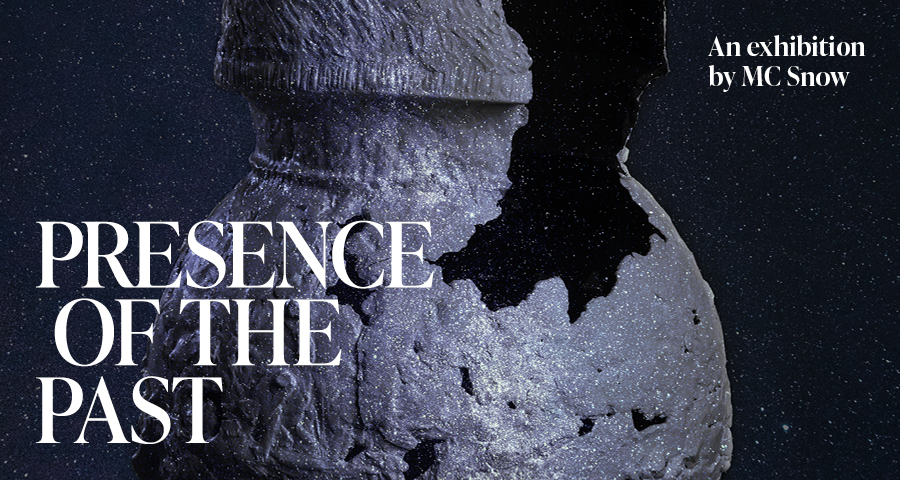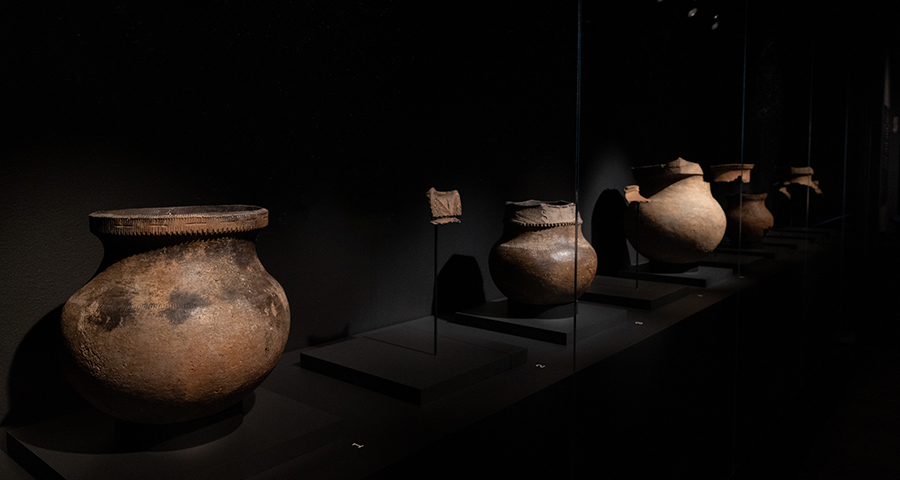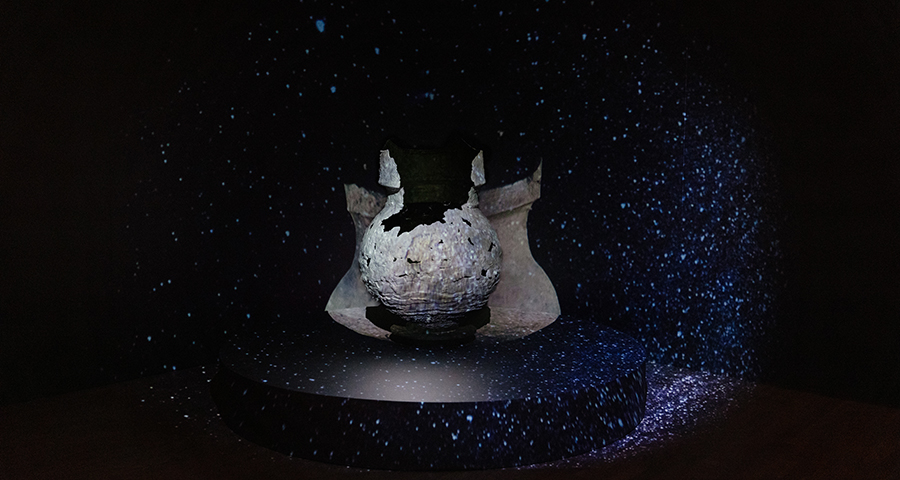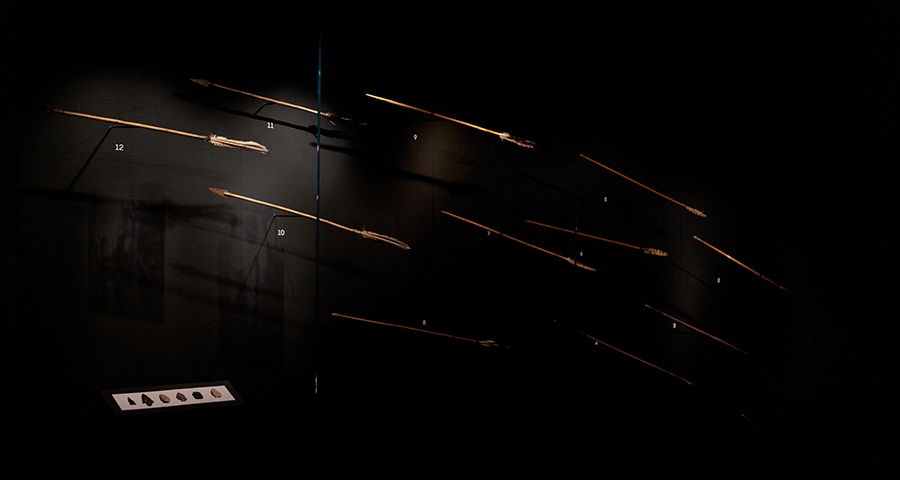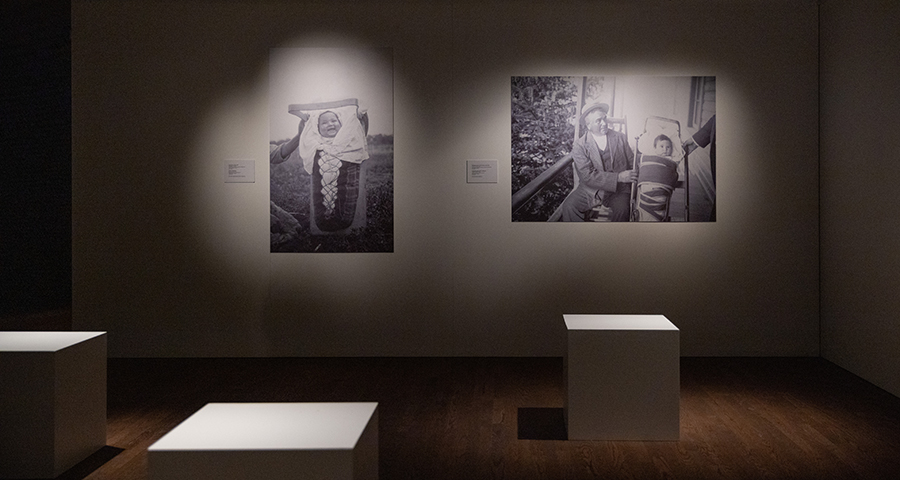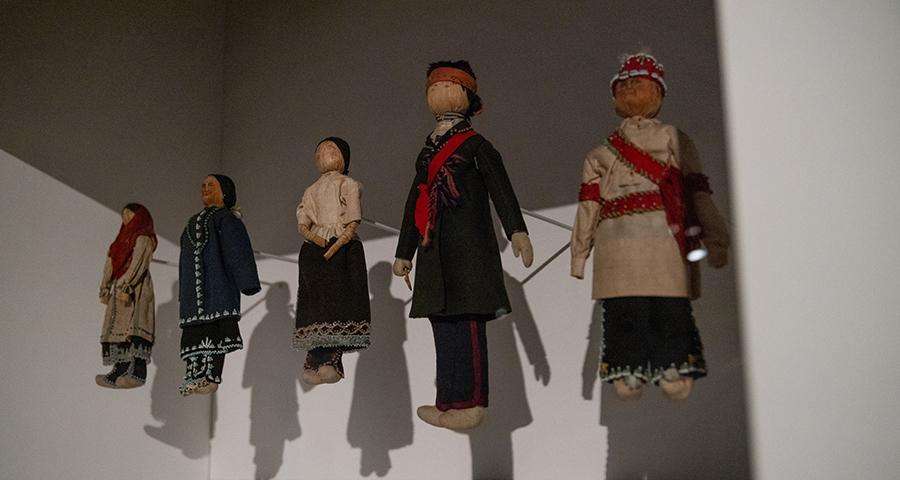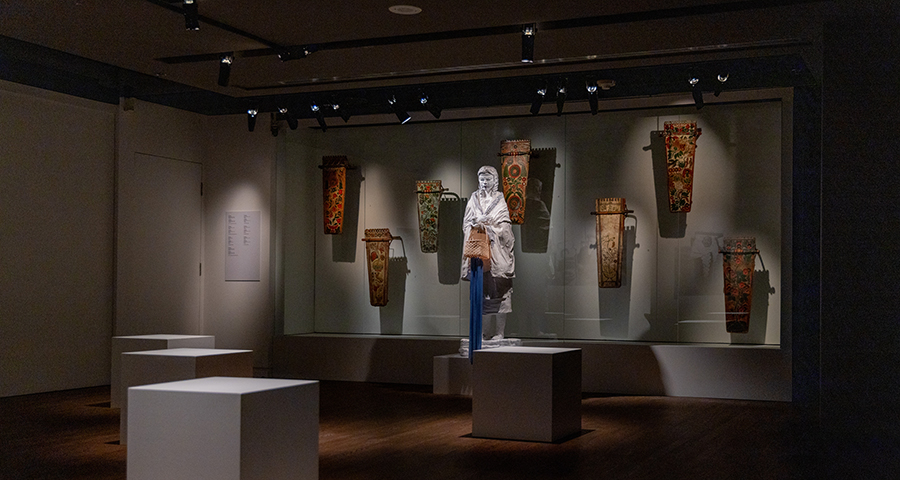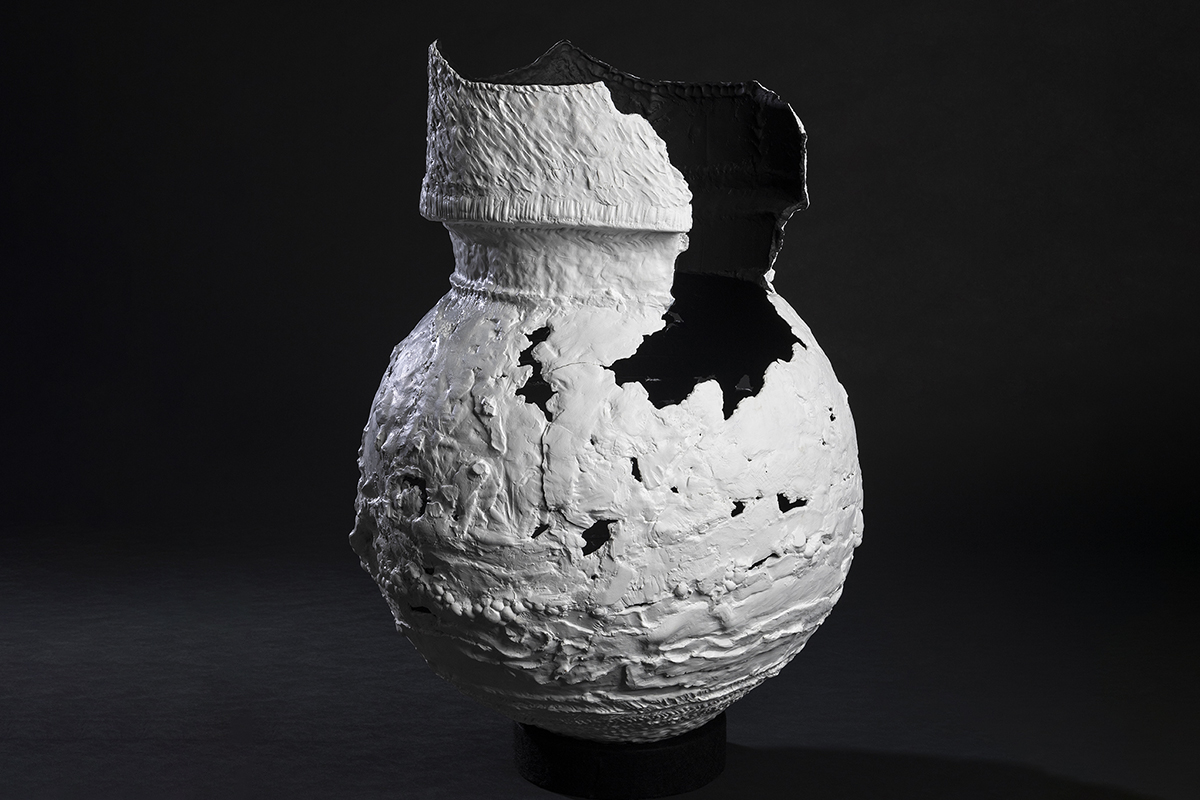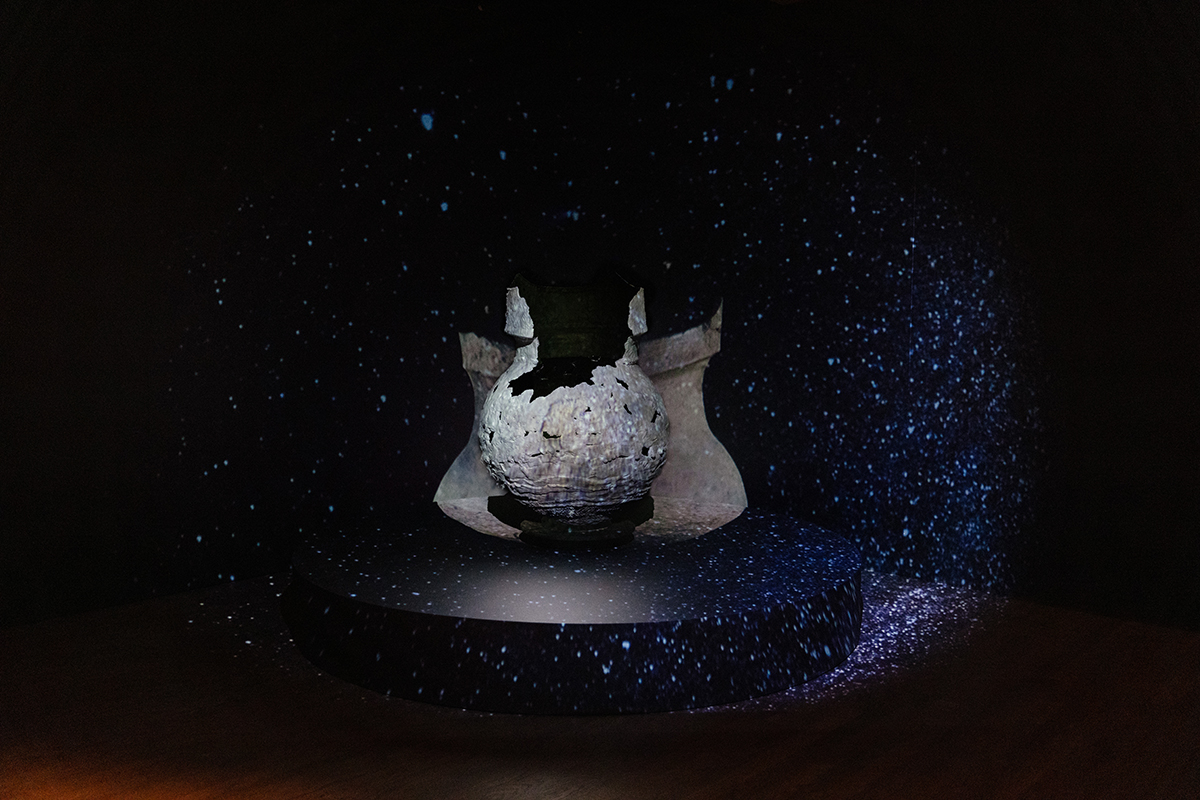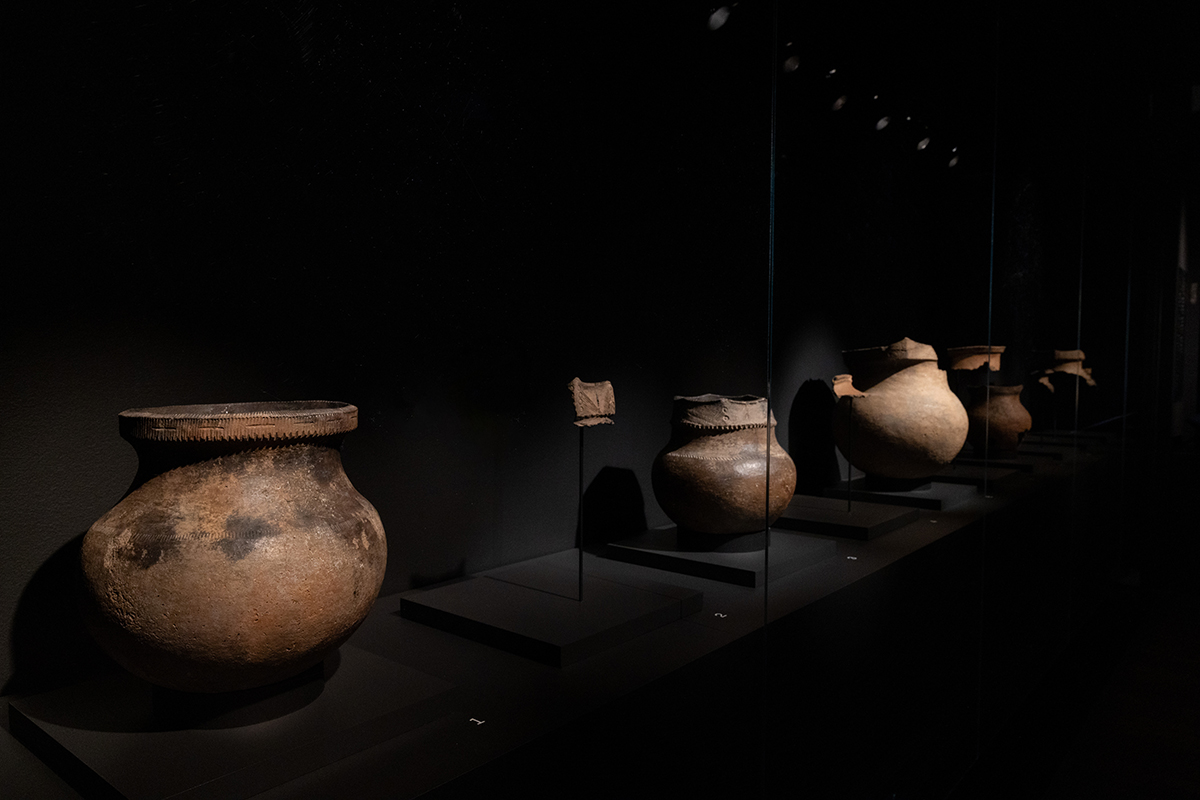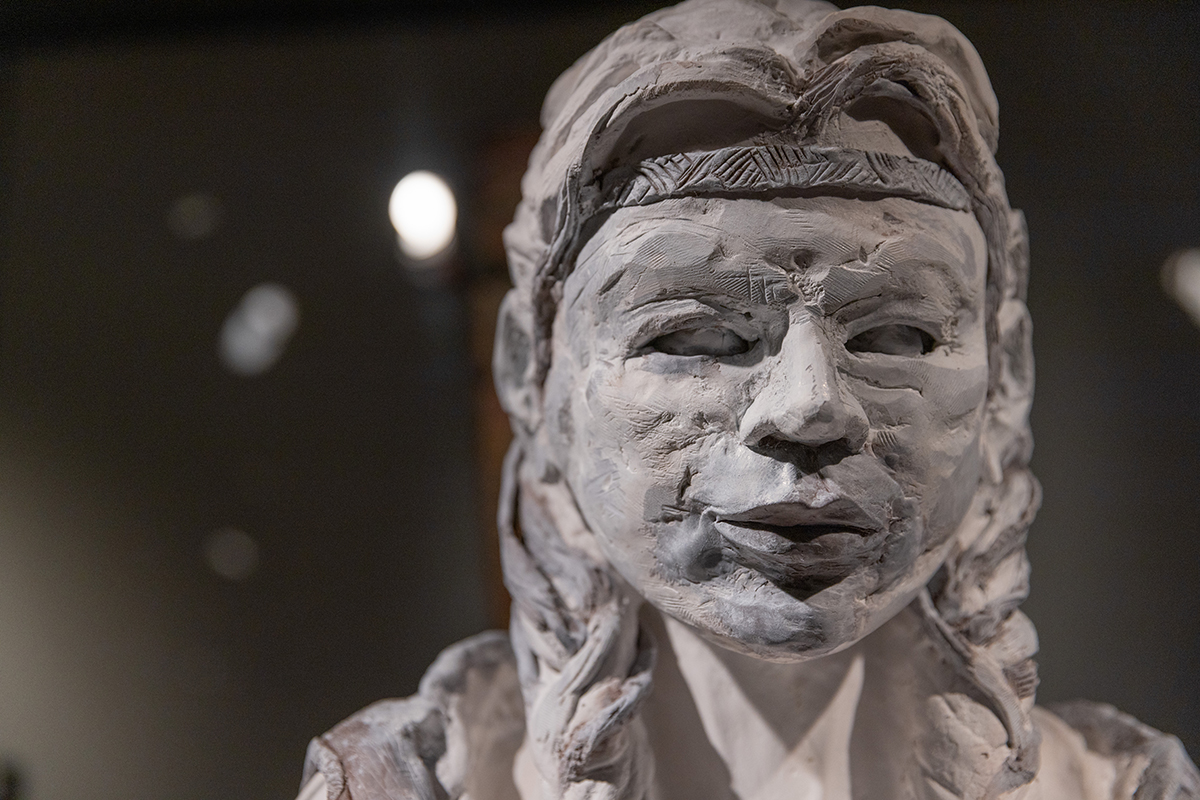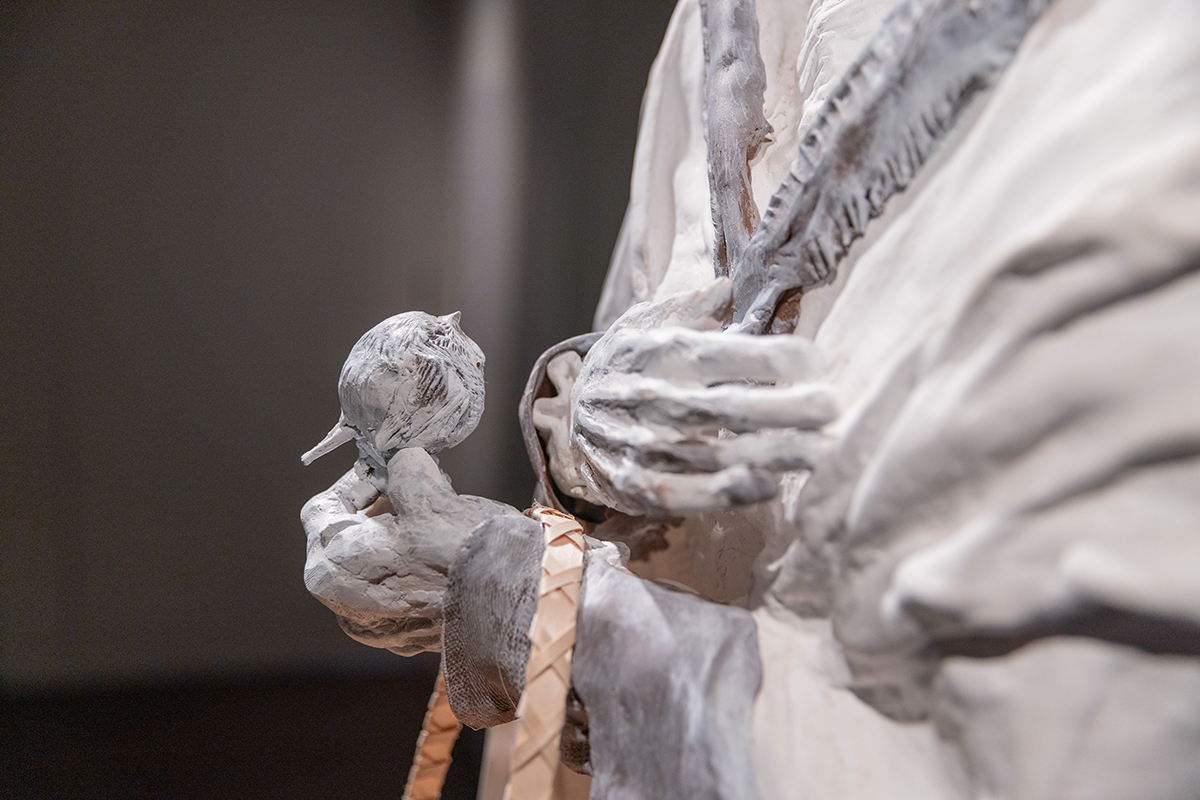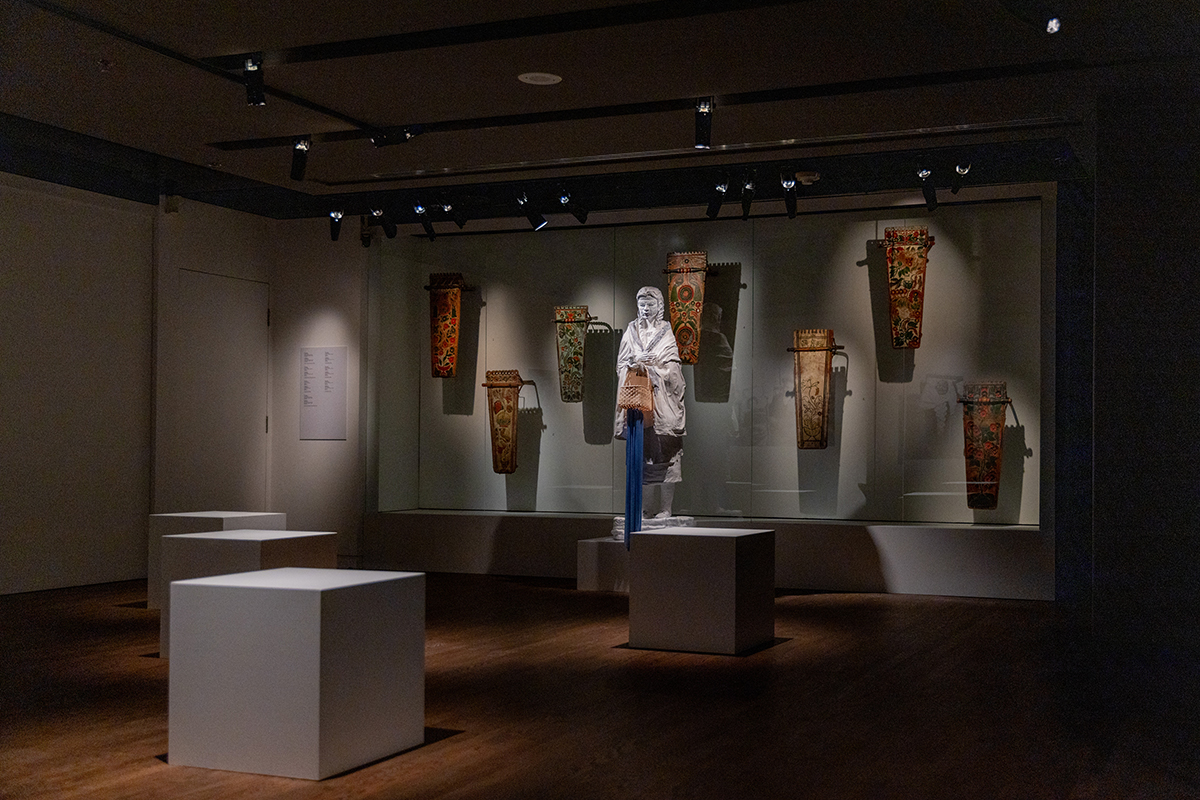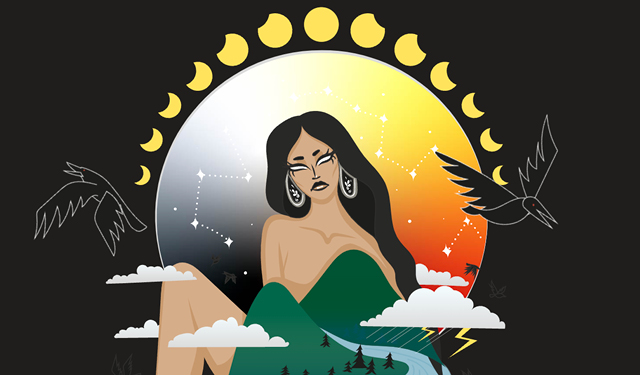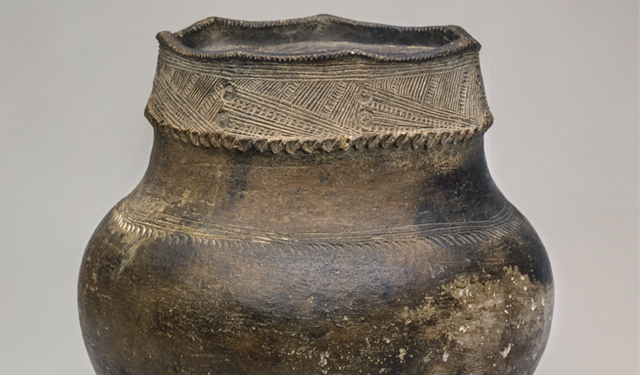Contemporary Native Art Biennial
From March 1 to August 18, 2024
Presence of the Past
MC Snow
For its first collaboration with the Contemporary Native Art Biennial, the Museum will host Kanien’kehà:ka artist MC Snow. In two original works, the artist explores the messages and emotions conveyed by the Kanien’kehá:ka objects in the Museum’s Indigenous Cultures collection.
As the artist wished to highlight the importance of researching and preserving Indigenous cultural assets, MC Snow and Jonathan Lainey, Curator, Indigenous Cultures, selected over forty objects from the collection, including pottery, baby carriers, dolls and arrows, to accompany the artist’s works.
MC Snow
MC Snow is a multidisciplinary Kanien’kehà:ka artist living in Kahnawá:ke. MC is a graduate of the University of Ottawa fine arts department (BFA). He has been working and exhibiting in Canada and the United States since the 1990s. His mostly sculptural work combines traditional materials and techniques. While reflecting contemporary concerns, his work contributes to preserving traditional artistic value and defending Kanien’kehà:ka cultural identity.
In 2021, MC curated the exhibition Ka’shatsténhsera presented at the Contemporary Native Art Biennial. In 2023, he took part in the Biennale Internationnale des Métiers d’Arts et Création in Paris, showcasing Indigenous artists and creators from Quebec. His many ongoing projects include designing street furniture by producing 10 bronze spheres for the City of Montreal’s Rue Peel project, which will officially launch in spring 2024.
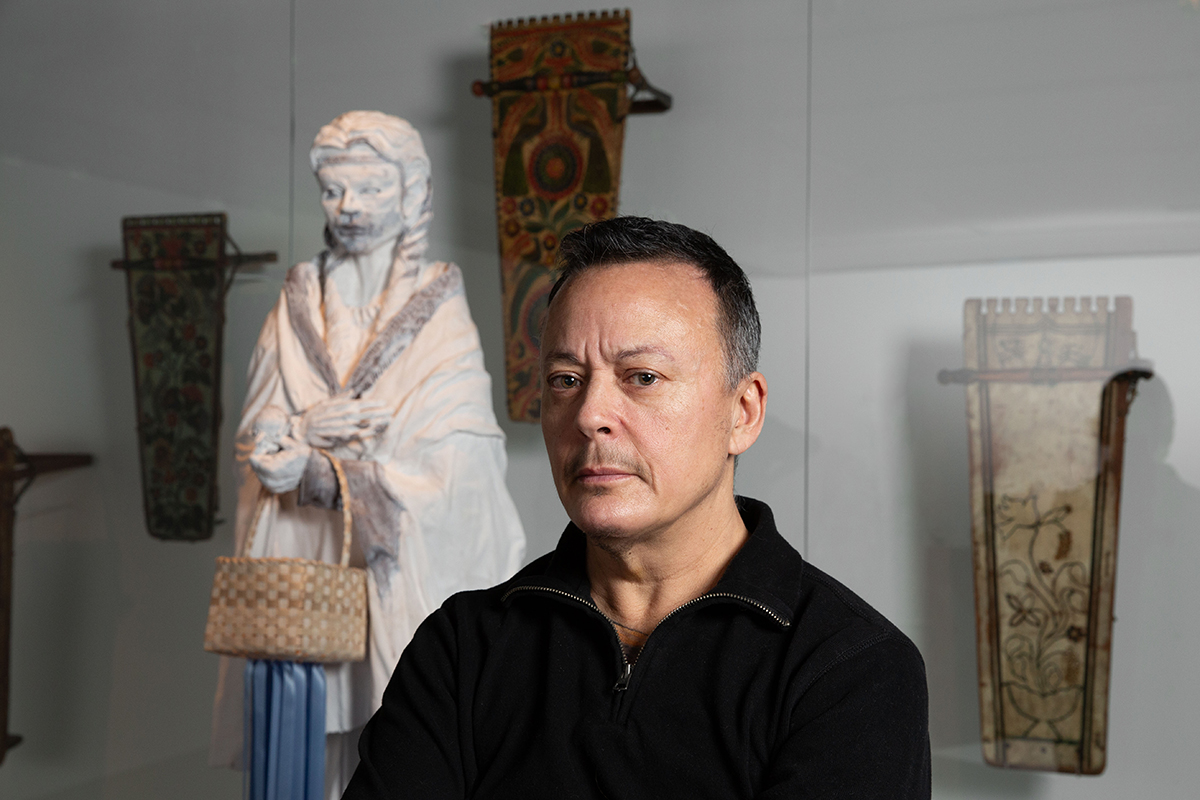
5 things to know
40 objects mostly of Kanien’kehá:ka origin
MC Snow explored the Museum’s reserves and selected 40 objects from which he drew inspiration to create two original sculptures at the centre of the exhibition.
Some of the cultural assets featured in the exhibition date back to the 14th century. By juxtaposing these objects – mostly of Kanien’kehá:ka origin – with contemporary representations of his reflections on the past, MC Snow explores the visceral emotions he feels in contact with them, drawing attention to the ways in which they convey meaning.
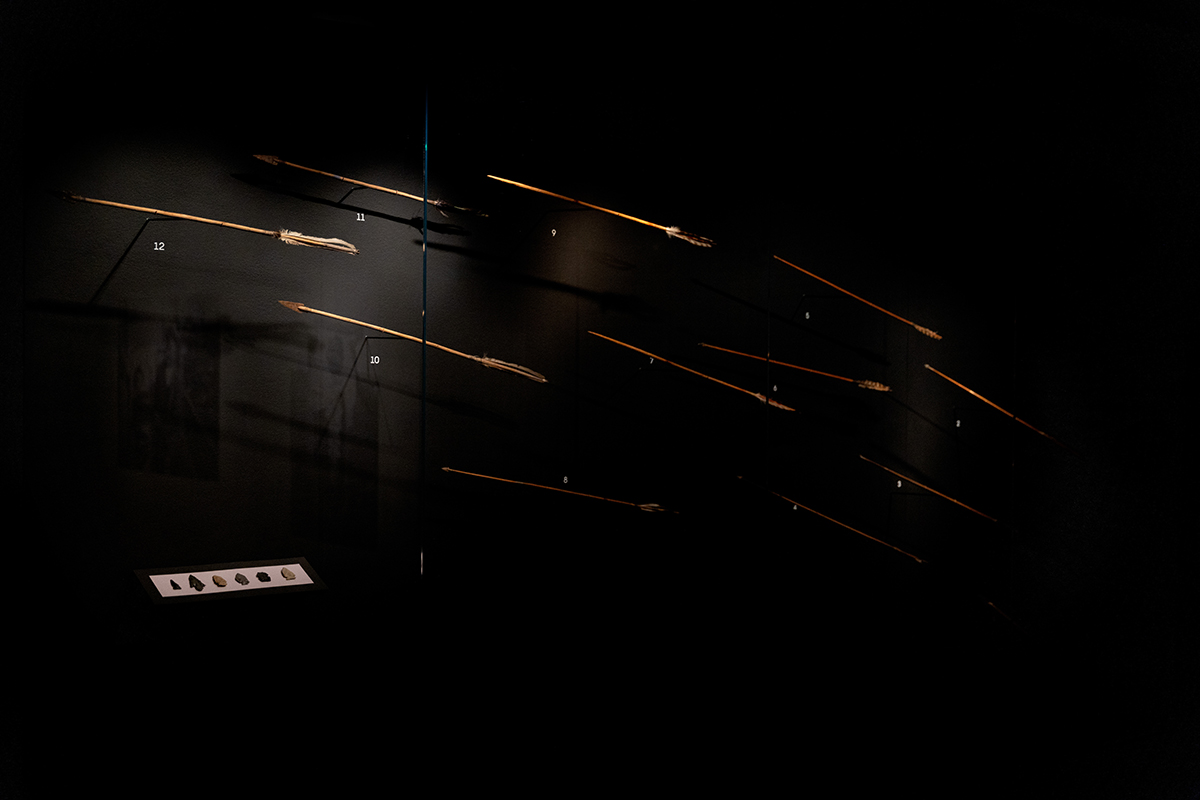
More than just an object
With Presence of the Past, MC Snow wishes to emphasize the importance of researching and preserving Indigenous cultural property, essential to transmitting the knowledge and safeguarding the cultural traditions of Indigenous peoples. This is reflected in the objects selected by MC Snow and Jonathan Lainey, Curator, Indigenous Cultures at the McCord Stewart Museum.
For MC Snow, the arrows represent self-preservation and the protection of Indigenous languages and cultures. The dolls embody the stories that Kanien’kehá:ka elders tell their children to explain the world around them. Baby carriers and decorated pots are used to pass on these values and teachings to future generations. The pot fragments are preserved so that their past remains accessible. The artist insists on the importance of treating objects with dignity, because for Indigenous nations, cultural property is more than just an object; it holds the spirits of their ancestors.
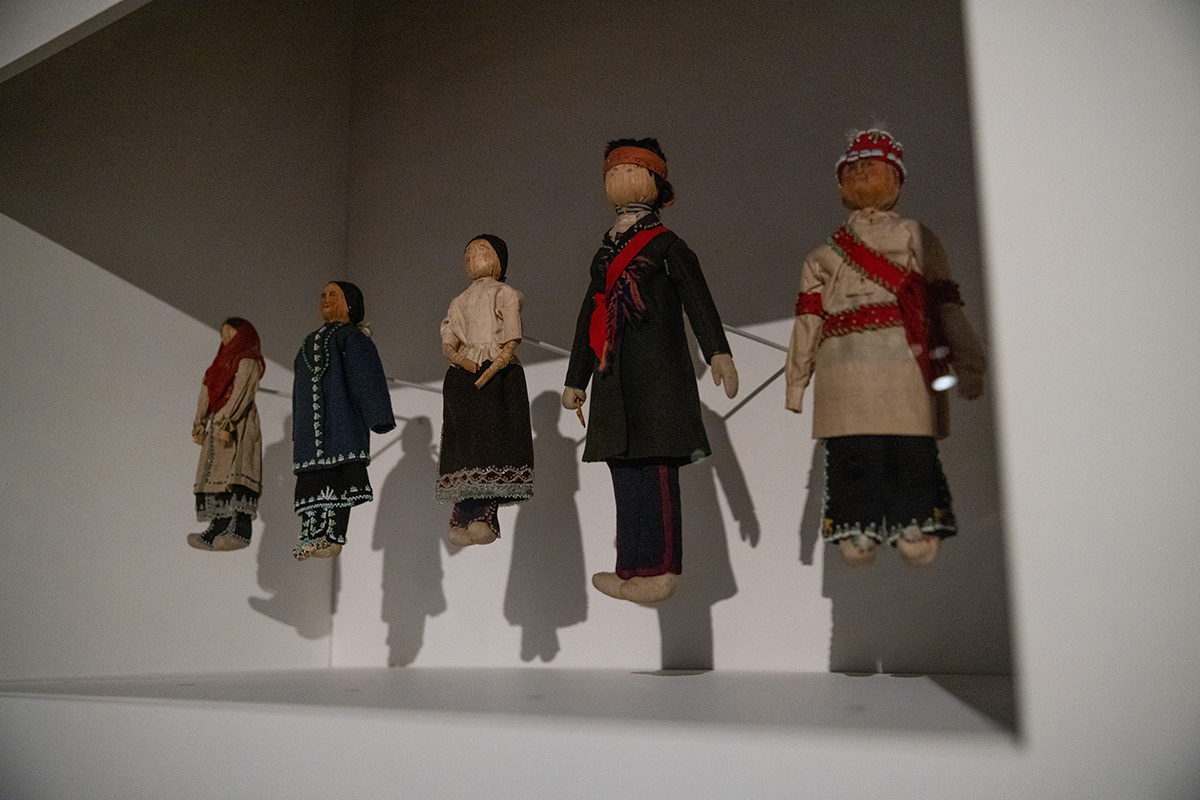
Pots preserve knowledge
“What set us apart from different communities was our pots and our ways of communicating symbols on the pots. For me, pots have always been objects that carry something. We place things in pots to contain and protect them. These are objects and knowledge that we preserve for the future, and therefore for generations to come.”
– MC Snow
Baskets carry ideas
“Young girl with basket is a kind of character who communicates ideas with her basket to the children that she, herself, carries on a cradleboard. The idea behind the girl carrying a basket is the story of a ceremony we perform in winter. It’s called Mid-winter.”
“We place all our misfortunes and troubles in the past and to do that, we take a basket, we tie ribbons on it, we place all our emotions inside it, and we burn it. It’s a symbolic gesture. We let go of the old year and advance into the new year. It’s like turning a page; it’s like closing the door on the past, and it gives us a new opportunity to do better things in the future.”
– MC Snow
First collaboration with the Contemporary Native Art Biennial
Presented as part of the Contemporary Native Art Biennial (BACA), Presence of the Past immerses the viewer in a space studded with objects from the Museum’s Indigenous Cultures collection as well as contemporary works.
This first collaboration with BACA is part of the reconciliation process to which the Museum has been committed for several years, highlighting both the ancestral knowledge and contemporary artistic practices of the First Nations. This event is a chance to appreciate the vitality and creativity of North America’s Indigenous cultures.
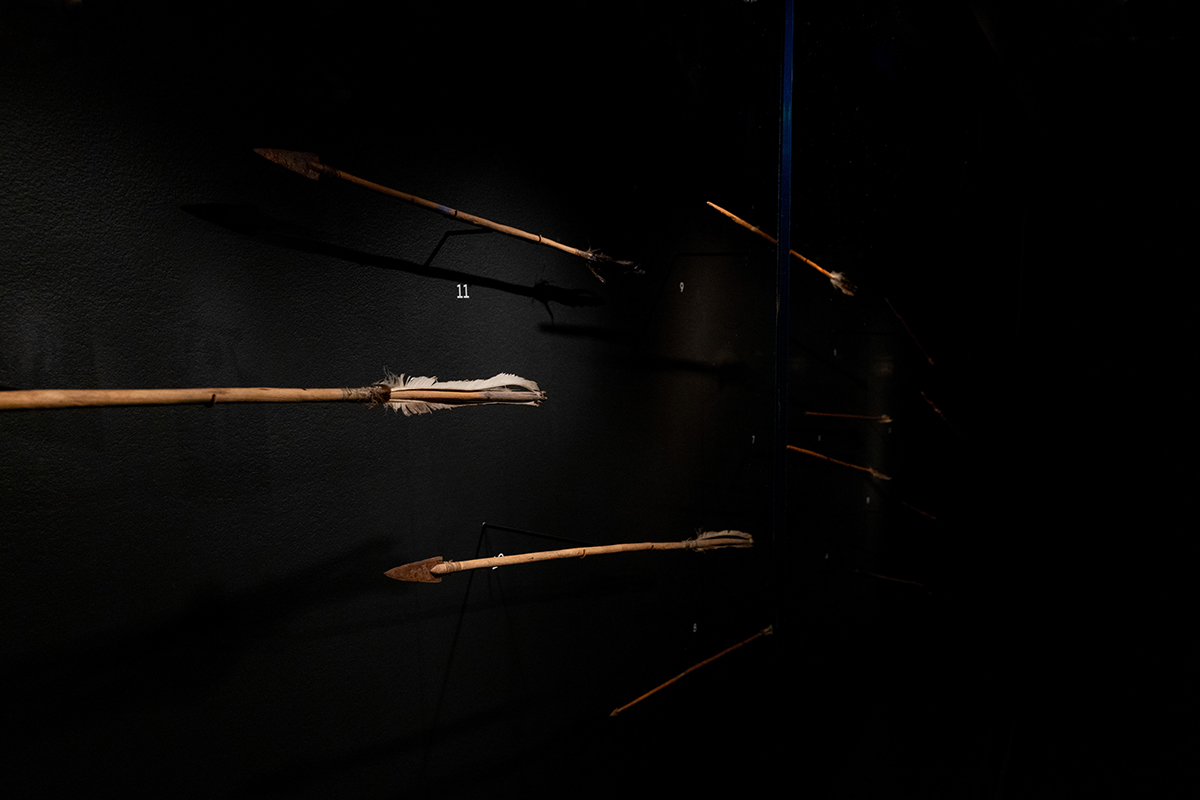
About the exhibition
Is this exhibition part of the Museum’s Artist-in-Residence program?
Although the process leading to the creation of the exhibition and the works presented in it followed the same steps as the Artist-in-Residence program, this exhibition was not produced as part of this program. The exhibition is presented as part of the Contemporary Native Art Biennial (BACA) and is produced in partnership with the McCord Stewart Museum. This is the first collaboration between the Museum and BACA.
What are the aims of the exhibition?
- Amplify the voice of a contemporary Indigenous artist
- Highlight the Museum’s Indigenous Cultures collection by presenting rarely exhibited cultural assets
- Stimulate discussion and reflection
How does the Museum make the exhibition accessible to members of Indigenous communities?
Access to the Museum is always free for members of Indigenous communities (details here).
Were the objects presented in the exhibition stolen from the communities?
In Canada and the United States, individuals from Indigenous communities, sometimes elders, chiefs or descendants of chiefs who have inherited wampum belts, have sold or donated them to amateur or professional collectors (antique dealers, numismatists or anthropologists).
Their sale or acquisition by collectors may raise questions about the consent of individuals in communities to part with these cultural assets. According to the Moved to Action report by the Canadian Museums Association (p. 53): “The presence of duress calls into question the voluntariness of an acquisition. Duress is defined by one of the participating parties of any trade of goods or intellectual property being forced to act against their will or better judgement due to threat, violence or societal constraint.” This notion of duress must therefore be taken into account when considering the ownership of museum objects.
Many cultural goods have been legally acquired by collectors. However, given the context in which Indigenous people lived at certain times, it’s important to ask whether selling objects of great spiritual value to collectors was not simply a question of survival. In fact, there are several examples of situations where items have been pawned by their custodians and subsequently not recovered, for lack of means.
It’s also important to consider that many archaeological digs in the past have been carried out without the consent of Indigenous populations. This reality must also be taken into account when considering the way in which the goods that make up museum collections were acquired. The pottery in the exhibition may have been discovered during excavations that were not authorized by the Indigenous nations. The legitimacy of subsequent purchases by collectors is therefore questionable.
Can we confirm how collectors acquired the objects featured in the exhibition?
It is sometimes possible to trace the first acquisition by a collector. However, it is often difficult, if not impossible, to determine whether the sale was made under duress. Given the highly symbolic and spiritual nature of Indigenous cultural property, it is reasonable to assume that the sales were not made in the complete absence of coercion.
- The method of collection and the precise source are rarely clearly indicated. The goods were often sold without the authorization of the community or chiefs, which could make the legitimacy of the transaction questionable today.
- One of the reasons for the sale of these goods is the change in modes of ownership, which gradually shifted from the collective and national domain to the individual and family sphere between the late 19th and early 20th century.
- We know that some goods have been bequeathed or sold in order to benefit from better preservation conditions, particularly in the United States.
Are the nations of origin of the objects in the exhibition known?
With the exception of 10 of the 11 arrows presented in the exhibition, the provenance is known. However, the degree of precision varies from one type of cultural property to another. While it is possible to determine the precise nation for certain goods (Kanien’kehá:ka or O-non-dowa-gah), sometimes this is not possible. In this case we write Iroquoian – which covers all the Iroquoian-speaking nations – or, if we have this precision, Haudenosaunee, in reference to the Confederation of the Six Nations (Senecas, Cayugas, Oneidas, Onondagas, Mohawks and Tuscaroras).
Restitution requests related to the exhibition
Could the cultural assets presented in the exhibition be returned to the communities?
The Museum recognizes the rights of Indigenous communities to access their heritage. If we were asked, we would certainly be open to organizing a meeting to discuss the best place to store these important goods.
Are any of the items in the exhibition the subject of restitution requests?
None of the items in the exhibition are currently the subject of a restitution request.
Will any of the cultural goods be kept in our collections after the exhibition’s conclusion?
The cultural goods that were kept in our collection will be returned to our storage rooms.
Acknowledgements
The Museum would like to thank its team and all those who contributed, directly and indirectly, to the presentation of this exhibition.
Artist
MC Snow
Curating
Lori Beavis
Michael Patten, Director General and President, BACA
Project Management
François Vallée, Head, Exhibitions, McCord Stewart Museum
Conservation
Jonathan Lainey, Curator, Indigenous Cultures, McCord Stewart Museum
Graphic Design
Anne-Marie Demers, Graphic Designer, McCord Stewart Museum
David Martin
Exhibitions
John Gouws, Chief Preparator, Exhibitions
Mélissa Jacques, Technician, Exhibitions
Olivier LeBlanc-Roy, Technician, Exhibitions
Patrick Migneault, Technician, Exhibitions
Siloë Leduc, Technician, Exhibitions
Conservation
Sara Serban, Conservator
Collections Management and Digital Outreach
Karine Rousseau, Assistant Head, Collections Management
Geneviève Déziel, Cataloguing Coordinator, Collections Management
Josianne Venne, Senior Technician, Collections Management
Stéphanie Poisson, Head, Digital Outreach, Collections and Exhibitions
Anne-Frédérique Beaulieu-Plamondon, Coordinator, Digital Outreach, Collections and Exhibitions
Laura Dumitriu, Photographer
Roger Aziz, Photographer
Education, Community Engagement and Cultural Programs
Elysa Lachapelle, Project Manager, Education, Community Engagement and Cultural Programs
Marketing, Communications and Visitor Experience
Marc-André Champagne, Officer, Public Relations
Revision and Translation
Pascale Guertin (French)
Katherine Hastings (English)
Painting
René Gauthier
Audiovisual Production
Vincent Cardinal
Tomi Grgicevic
Martin Pierret
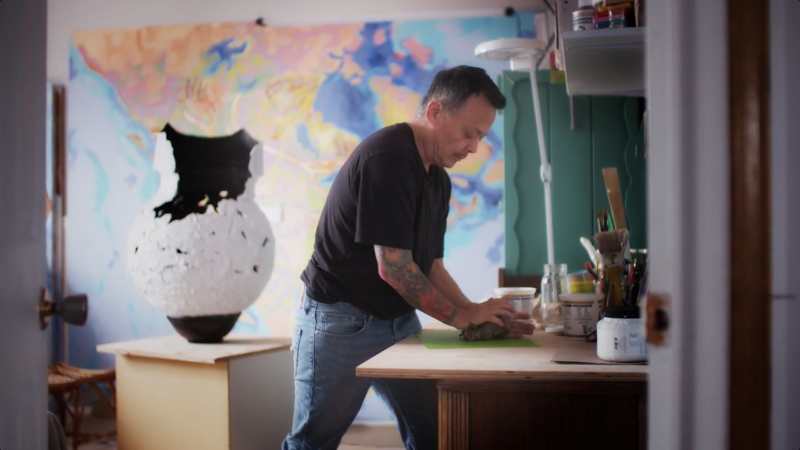
Discover MC Snow’s artistic process, as well as his reflection on the emotions and messages conveyed by the Kanien’kehá:ka cultural objects. He tells us about the works he created for the exhibition, inspired by these objects.
Be an insider!
Subscribe to our newsletter to get the inside scoop on upcoming exhibitions and cultural events.
Subscribe now
